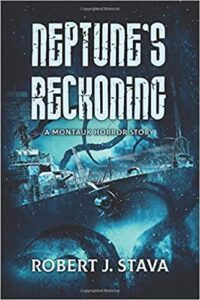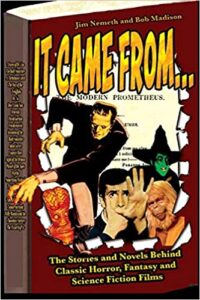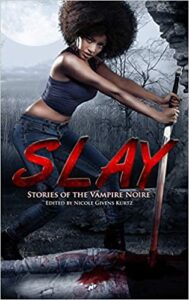( Amazon.com )
Neptune’s Reckoning: A Montauk Horror Story, by Robert J. Stava
Severed Press, 2020
ISBN: 9781922323644
Available: paperback, Kindle
Neptune’s Reckoning is an undersea thriller to be reckoned with. It’s a sleek, well-designed craft that cuts through the competition, hitting all the right peaks. File this book in the category of “Books that should have been nominated for a Stoker Award”. Peter Benchley will always be the master of ocean-themed horror, but author Stava comes pretty close to matching him with this book.
Reclusive historian William Vanek spends his days at home on Long Island, researching shipwrecks and naval history of little significance. An old friend of his from Navy intelligence recruits Vanek, along with extreme photographer Danielle “Dan” Cheung and shipwreck specialist Arnaud Navarre, to look into the recent discovery of a missing World War II destroyer, the USS Exeter. The story rolls out at a pace as smooth as glass, as the three of them are drawn into a web of mysterious killings at sea and government cover-ups. The mystery deepens, as it becomes clear the destroyer was involved in some dangerous, high level research before it sank. It’s up to the three of them to discover the truth about the Exeter, and put a stop to who (or what) is responsible for killing boaters in the Montauk area.
Neptune’s Reckoning is as good as it gets for a horror/thriller novel. The pacing is perfect; it hits the bull’s-eye between breakneck speed and slow burn. There’s a secondary story thread involving toxic waste dumping near the Exeter that adds another factor to the story, and is just as interesting as the primary story. All the secondary characters are critical to keeping the story flowing: they are drawn perfectly and enter and exit the narrative at just the right time. The eco-warriors and small-time criminals make excellent foils to the main story, and are as intriguing as the main characters. The book also does a nice job splitting the story settings between land and sea. Each section gets enough time, preventing the book from being one-dimensional.
It’s worth noting that if you haven’t seen Stranger Things, doing a bit of spot research on Camp Hero, Montauk, NY, and the conspiracy theories around them helps to lend a greater understanding of the book’s background. The stories behind Montauk are not critical to following the book, but it does help. There’s also a nice touch of sci-fi involving the entity inhabiting the waters around Montauk. It isn’t just a shark or oversized squid tearing its victims to shreds, it is much more mysterious-and deadly. The reader won’t get a total explanation for everything that happens at the end of the book, and that may be a bit frustrating for readers who prefer every plot thread to be explained in full. Everyone else will love the smooth sailing that is Neptune’s Reckoning.
This is one you can’t miss, and it should find a wide audience for horror and adventure readers alike. It’s also tailor-made for the silver screen; let’s see if Hollywood picks it up. Highly recommended.
Contains: violence, limited gore, profanity
Reviewed by Murray Samuelson







Follow Us!